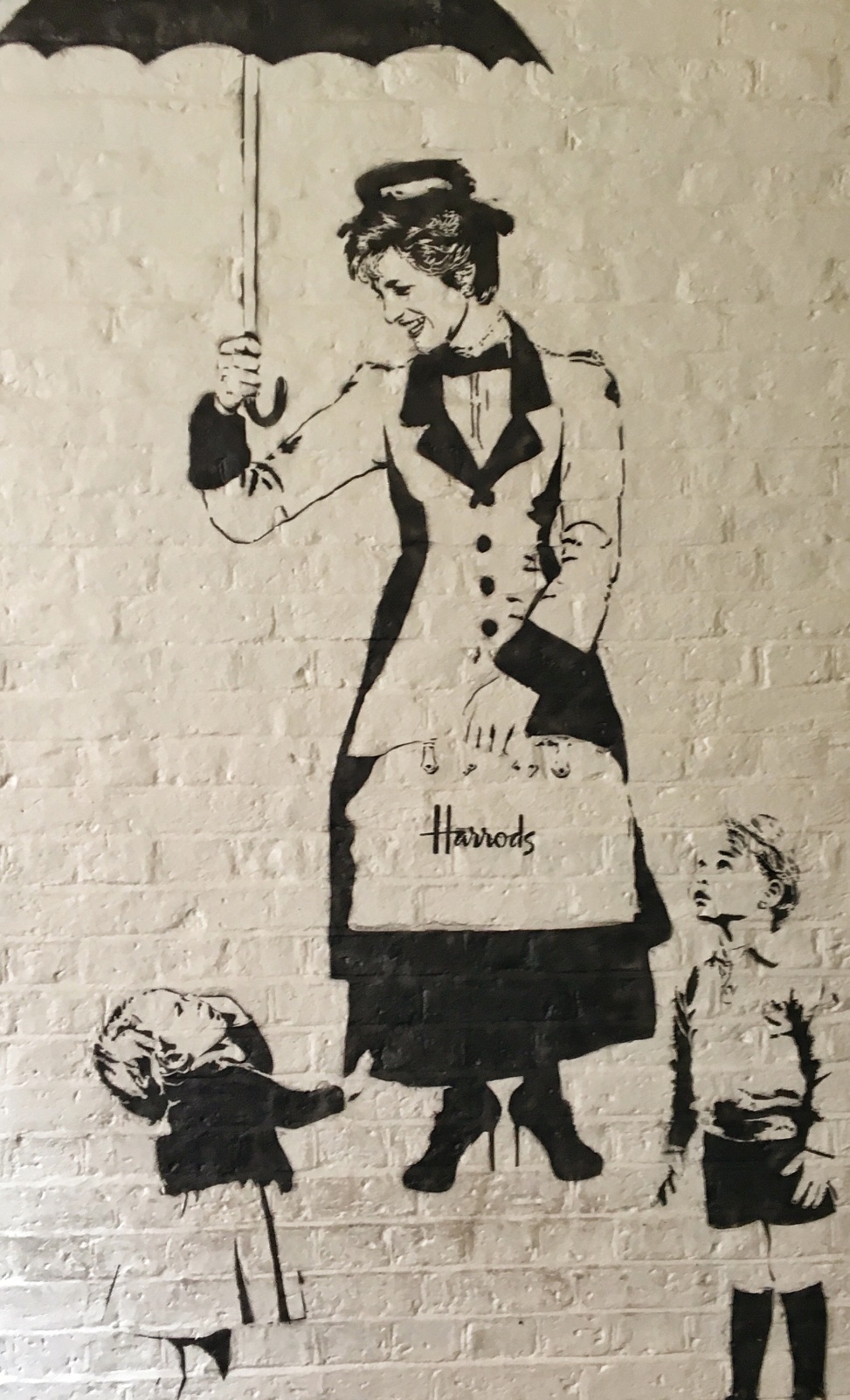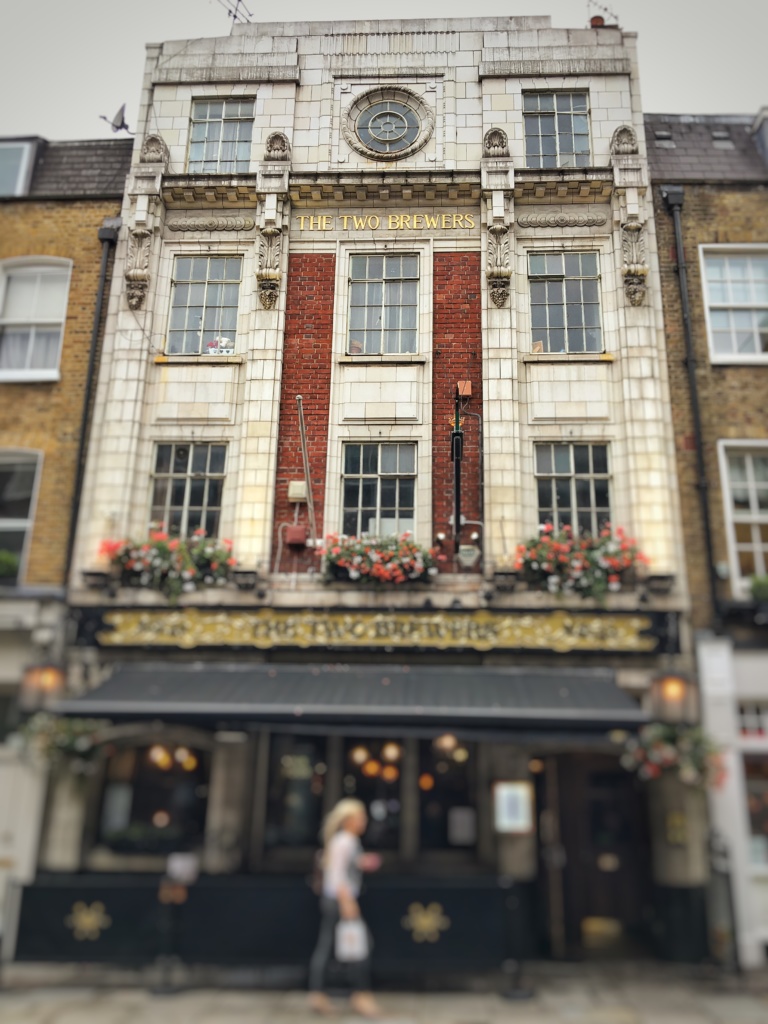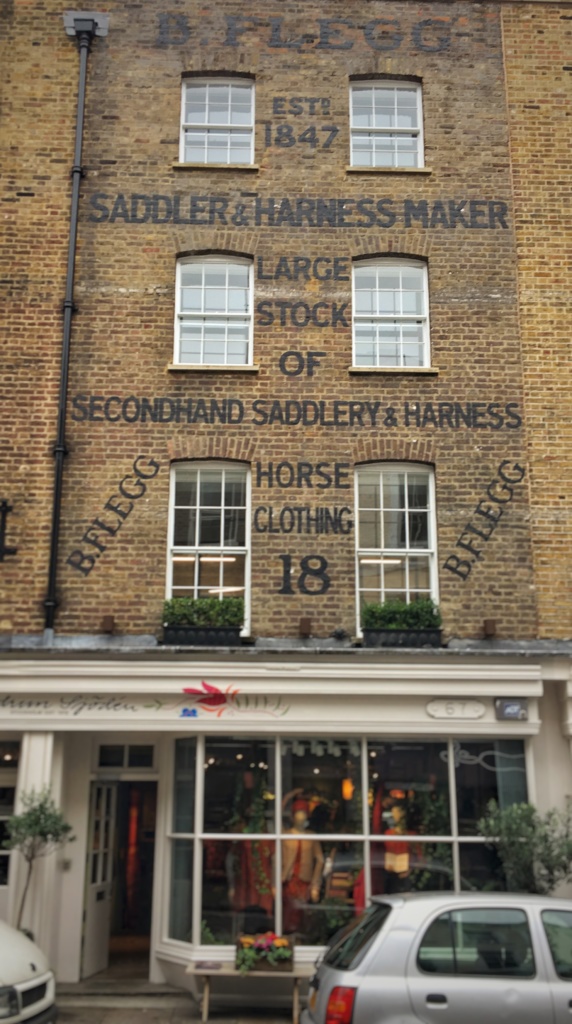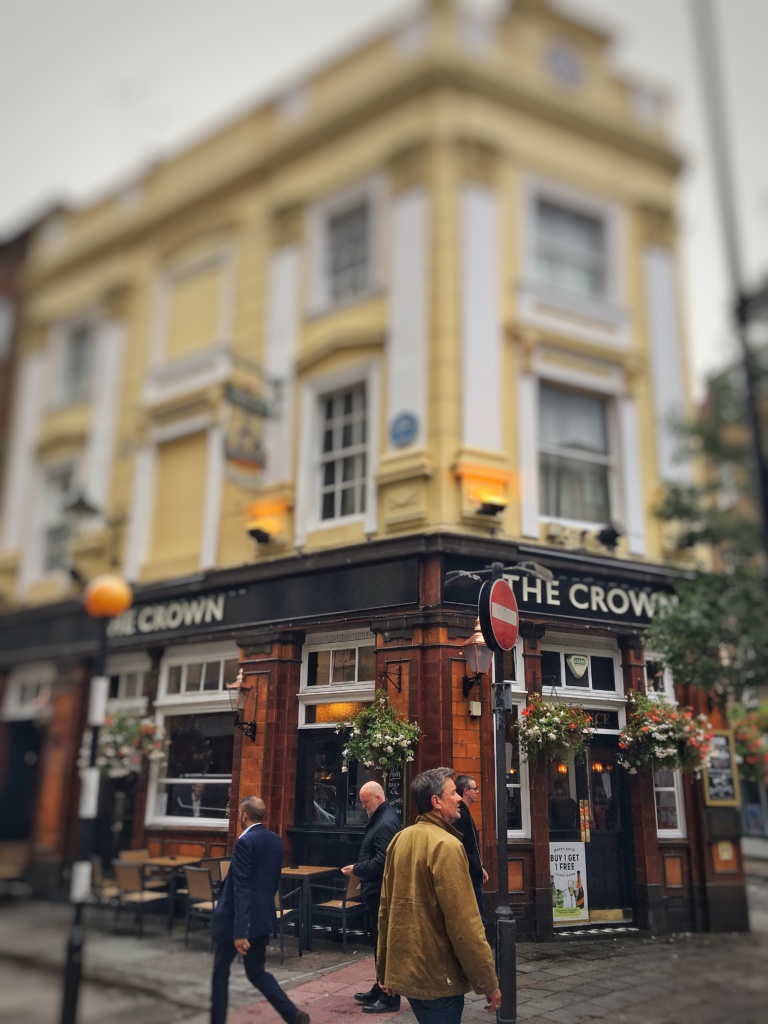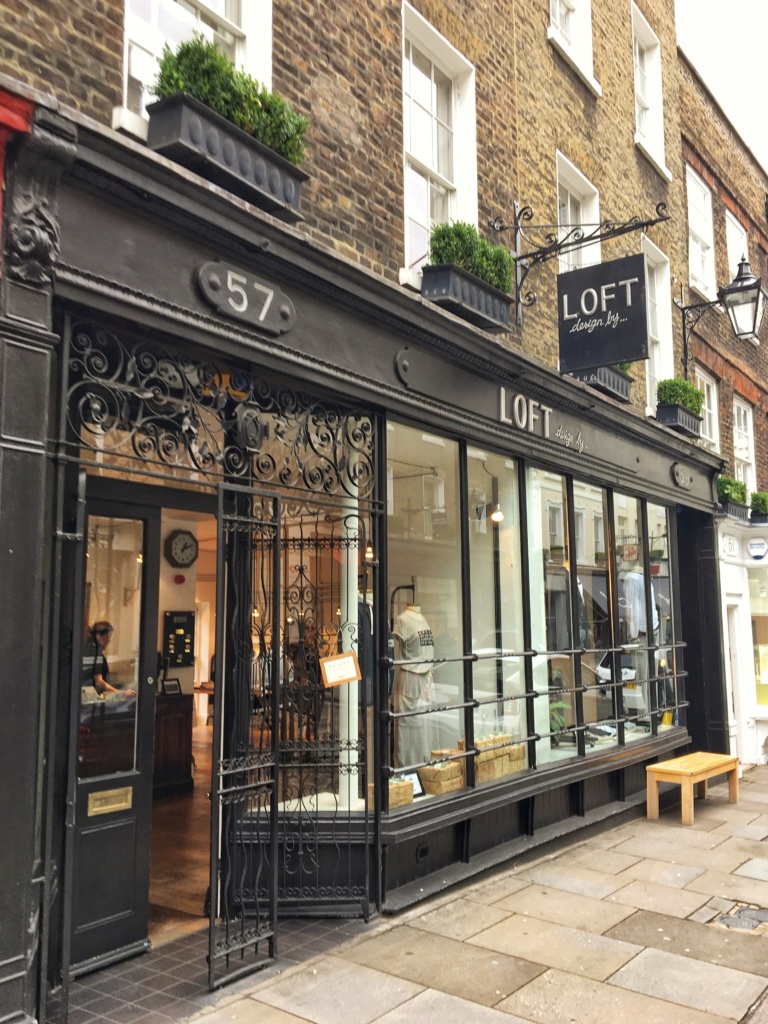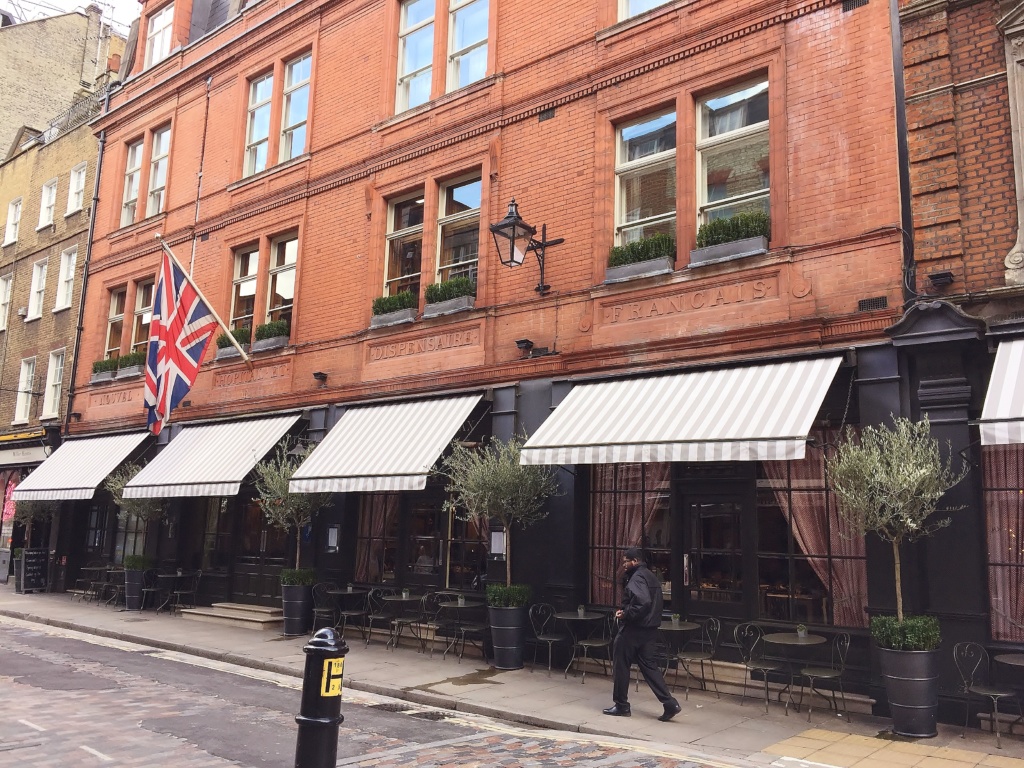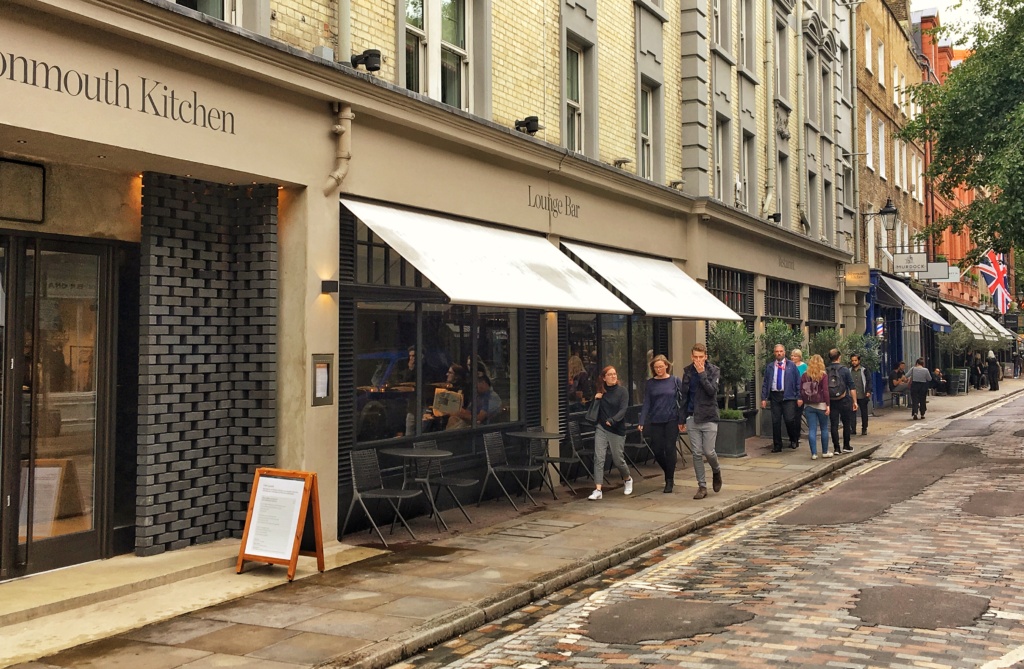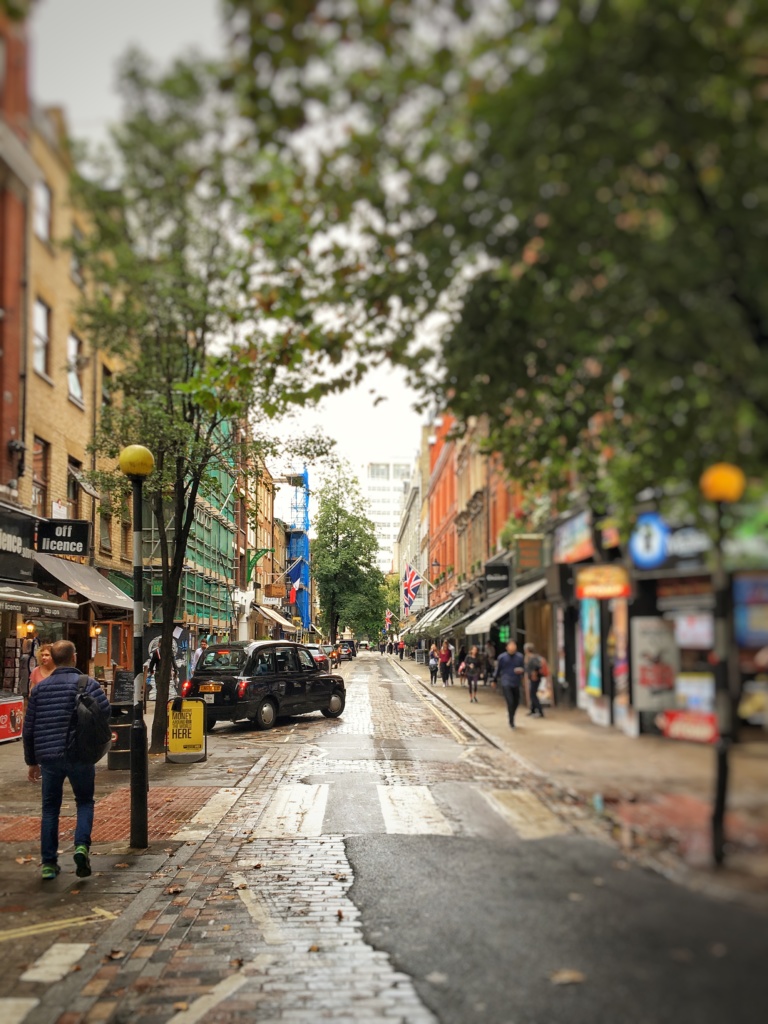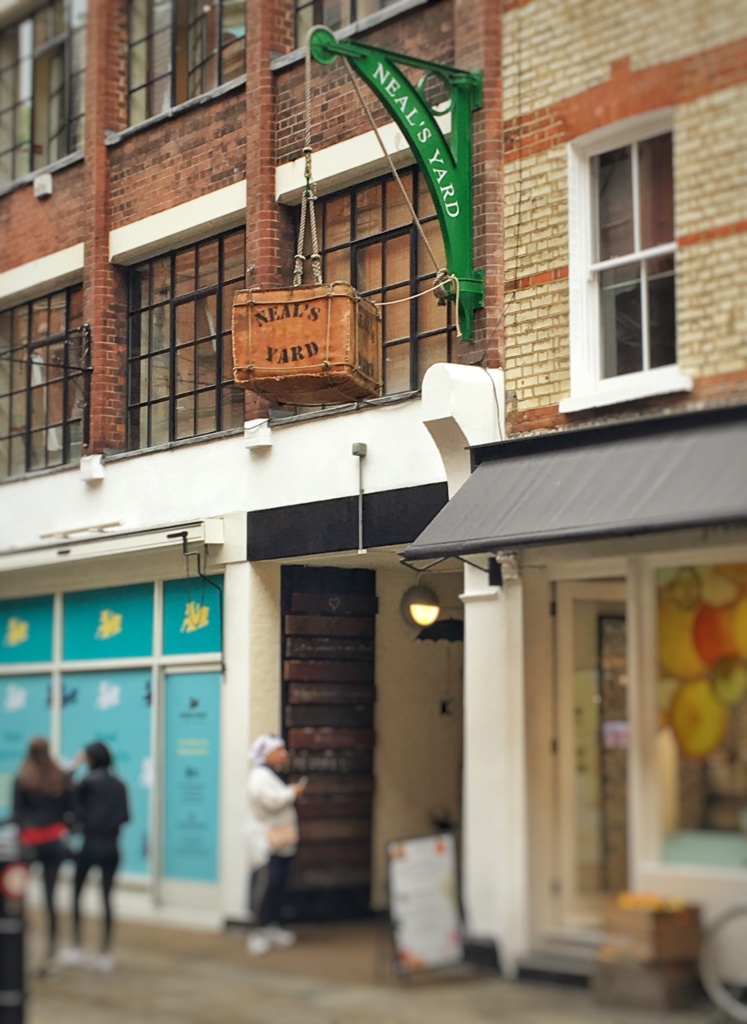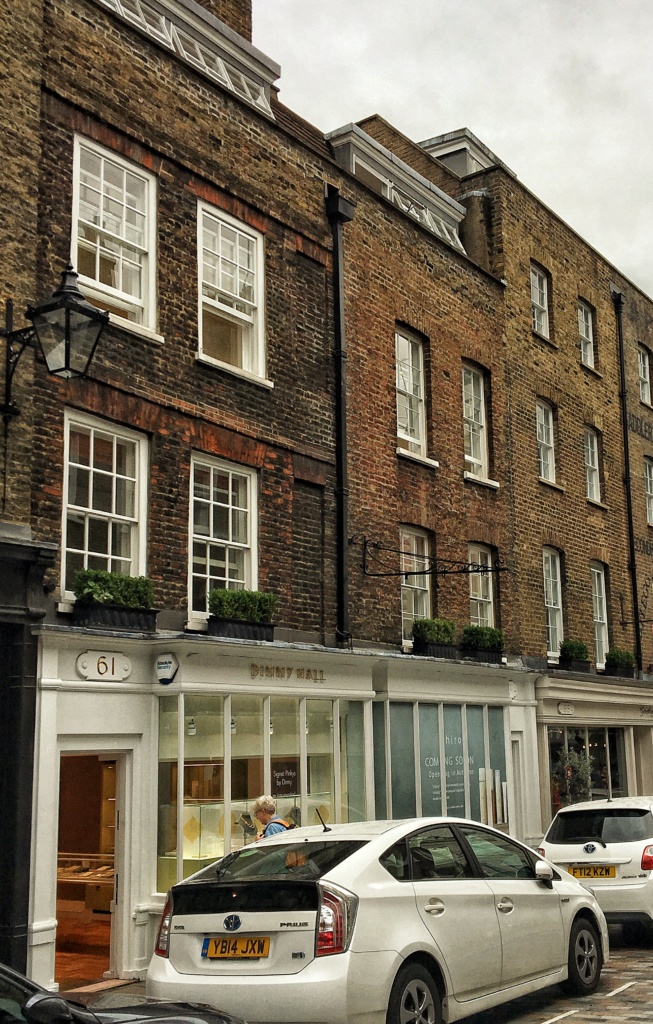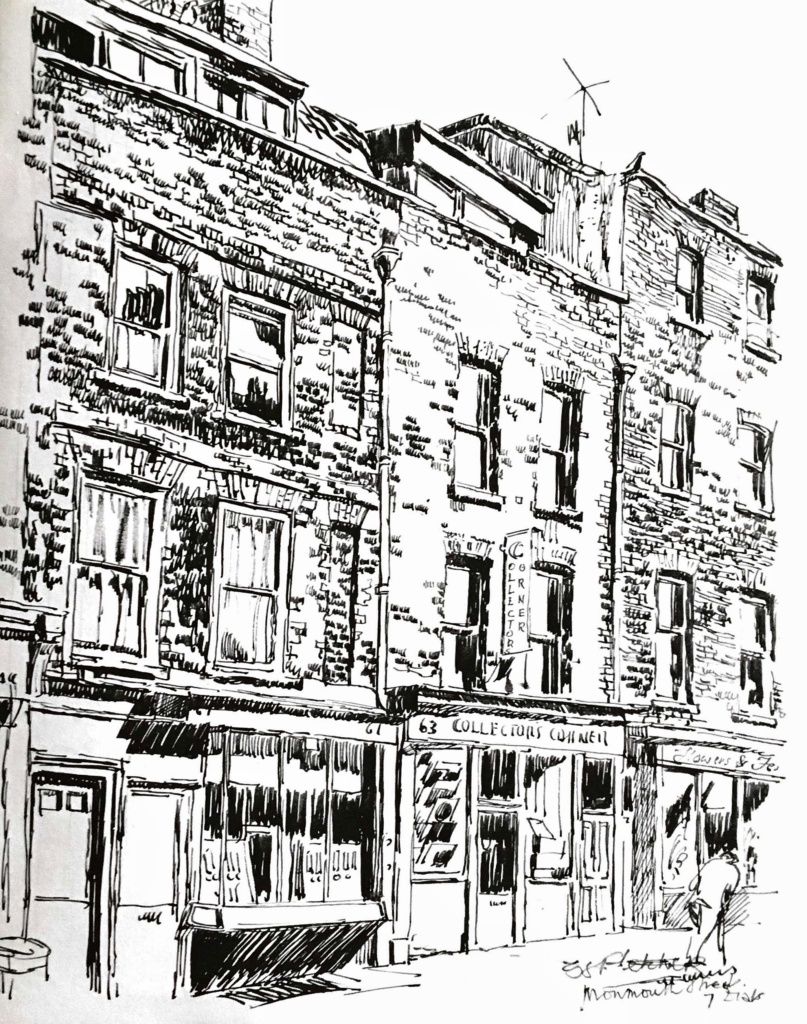I came into Monmouth Street looking for a scene sketched by Geoffrey Fletcher in his book The London Dickens Knew. That’s how sad I am. I collect old sketches of London then go to see if that bit of the city is still intact.
Monmouth Street runs from the south-west to the north-east of Seven Dials, crossing the epicentre of the area and making up two of the seven roads that lead away from the sundial that sits there. I walked north-east but couldn’t find the buildings drawn by Fletcher.
Seven Dials was a property development of the 1690’s led by Thomas Neale, whose name remains in use in the nearby Neal’s Yard although it has misplaced an “e” in the intervening three hundred and more years. It was designed as six roads leading from the sundial but Neale squeezed a seventh in to maximise his return. The sundial has six corners and was commissioned before the extra road was added. Neale also used a strange cross pattern of roads that optimised road-fronted property as he could charge more for that.
The development was targeted at the newly wealthy but nfortunately the area never really caught on and was quite a long way downhill by the nineteenth century when it became one of the capital’s most notorious slums. Every cloud has a silver lining, though, and each of the six buildings facing on to the sundial was a pub, one of which, The Crown, remains, although it is very smart these days.
In fact the area is very prosperous. Neale’s vision has ultimately paid off. Monmouth Street is full of expensive and chi-chi eateries, boutique hotels and high end shops. Its a little pleased with itself, if the truth be known. In the passageway into Neal’s Yard there is even a Banksy-style graffiti image of Princess Diana as Mary Poppins talking to her two would-have-been granchildren, George and Charlotte. A phrase she used to say to her sons is printed beside it, saying “You can be as naughty as you want but don’t get caught.” Its rather nice but a little twee. Its by the street artist called Bambi.
Dickens was a frequent visitor in the old days and wrote about the poor inhabitants of Monmouth Street. He would not have been talking about this street, however, as it was called St Andrews Street at that point – the two sections either side of the sundial were Little and Great. The original Monmouth Street was actually up near where Shaftesbury Avenue is today and this street was only renamed after it in the twentieth century.
The street, whatever its name, has some nice features. A newly restored “ghost sign” advertising a Saddlery and Harness Maker, a couple of good pubs, some splendid street lamps and a lovely ironworked doorway at no. 57.
The good news, though, is that Geoffrey Fletcher’s scene was still there. 61-65 Monmouth Street. Much as it was in the 1960’s. You can see the sketch and the contemporary view at the bottom of the post.
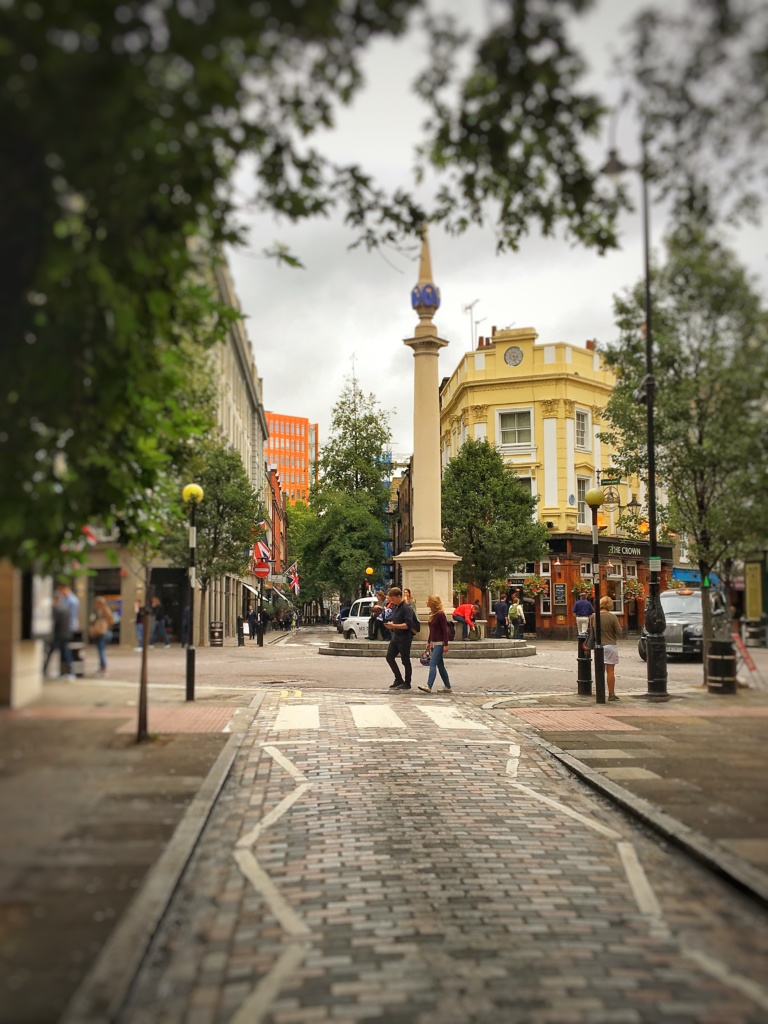
Approaching Seven Dials from the south of Monmouth street. The sundial sits at the centre of the area.
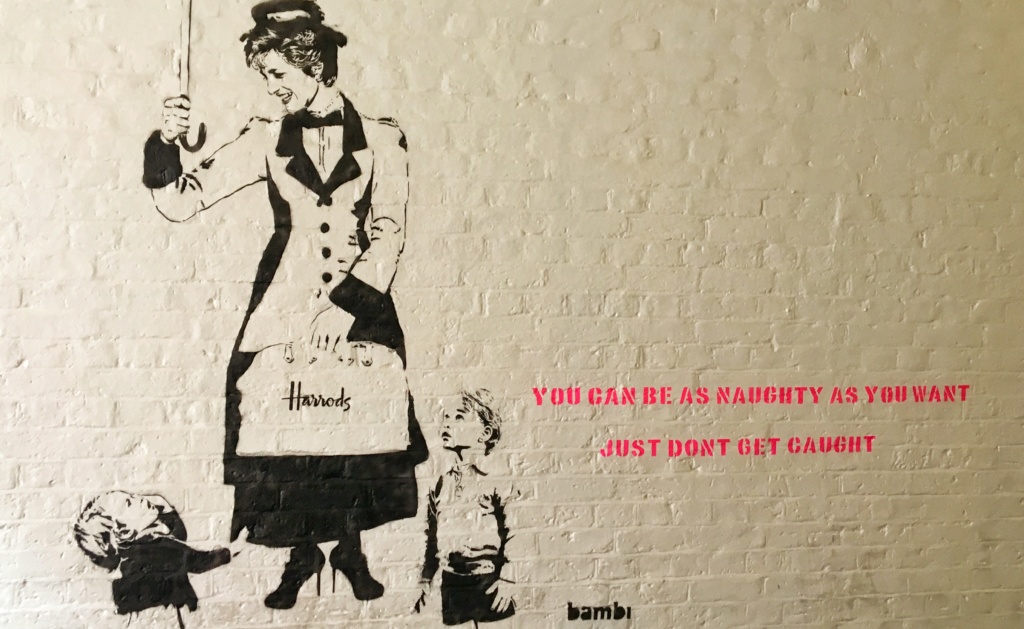
The Diana graffiti currently in the passageway to Neal’s Yard. It says “You can be as naughty as you want. Just don’t get caught.”
If you enjoyed this, you might like:
